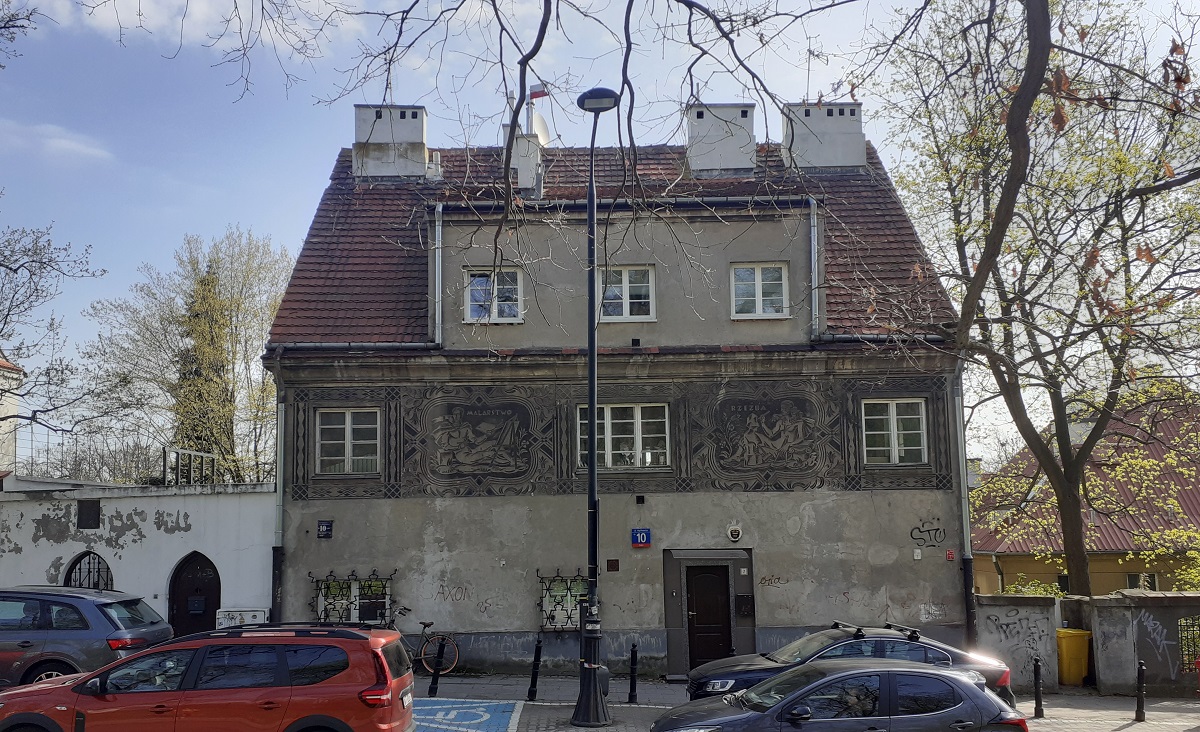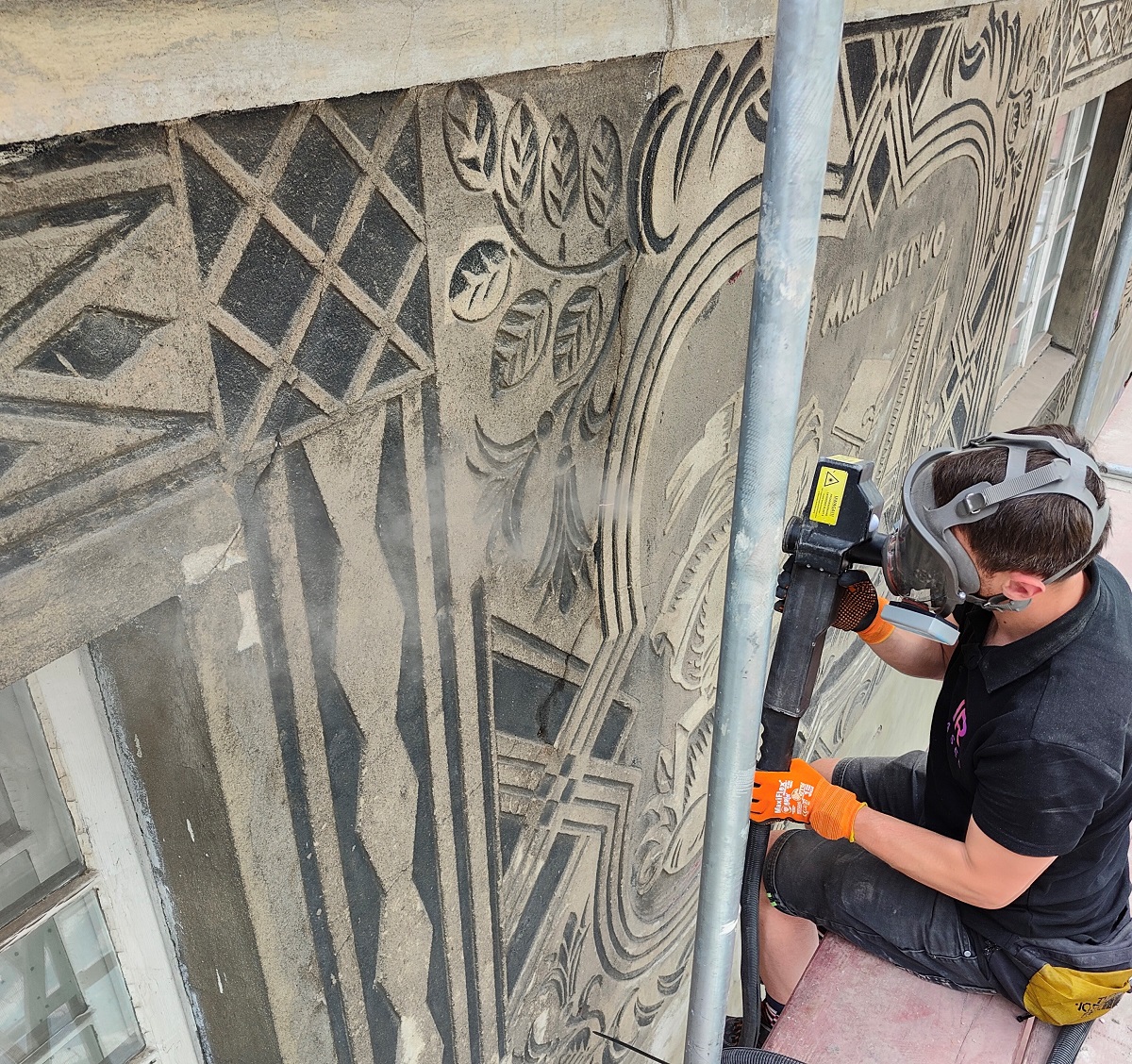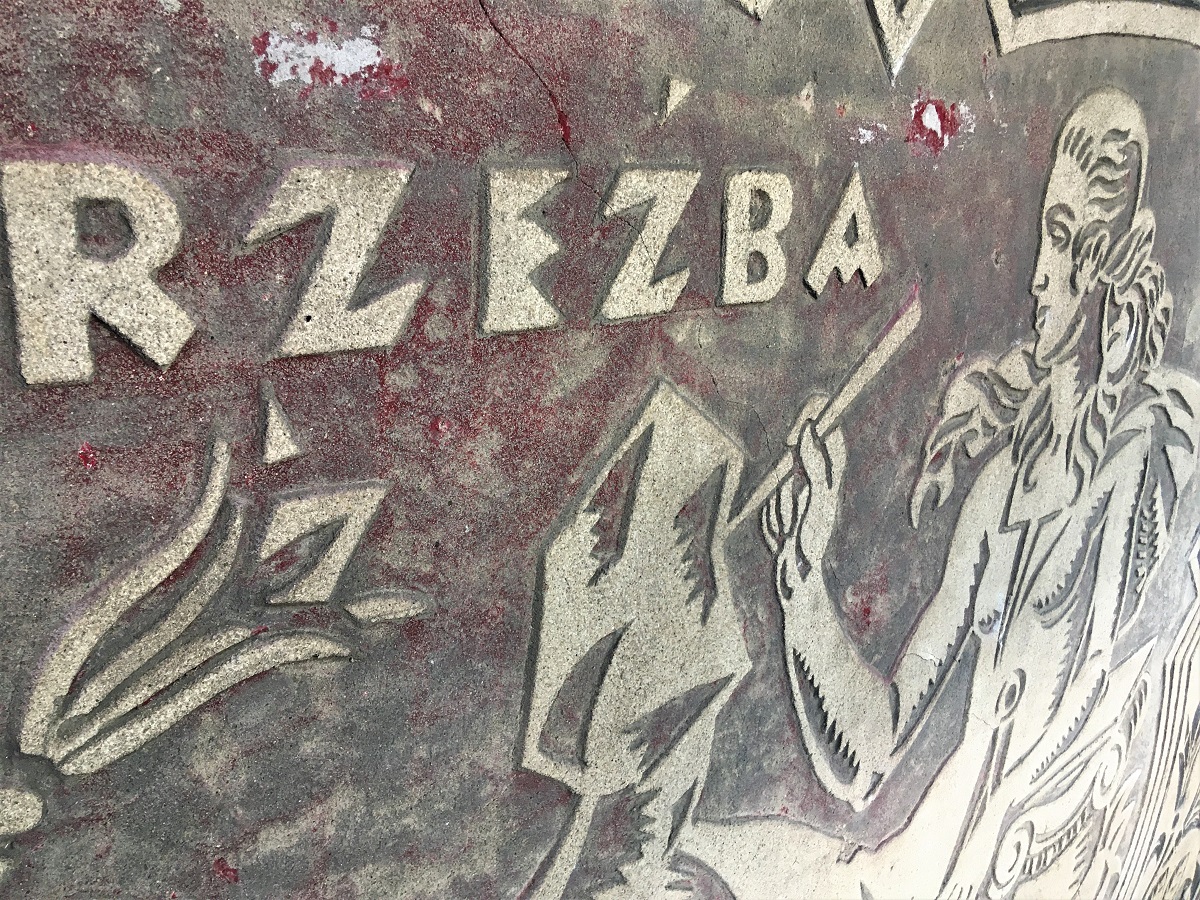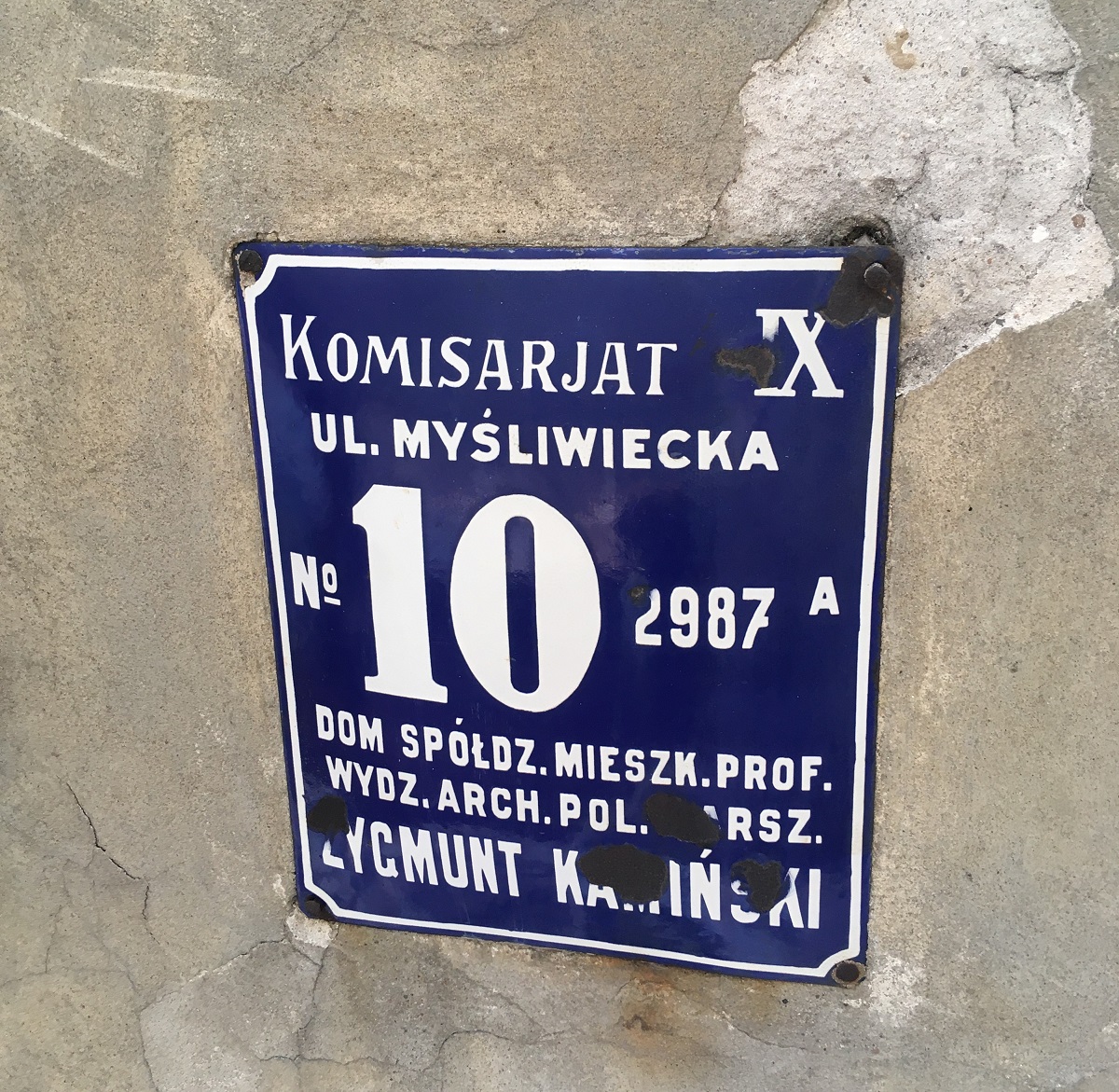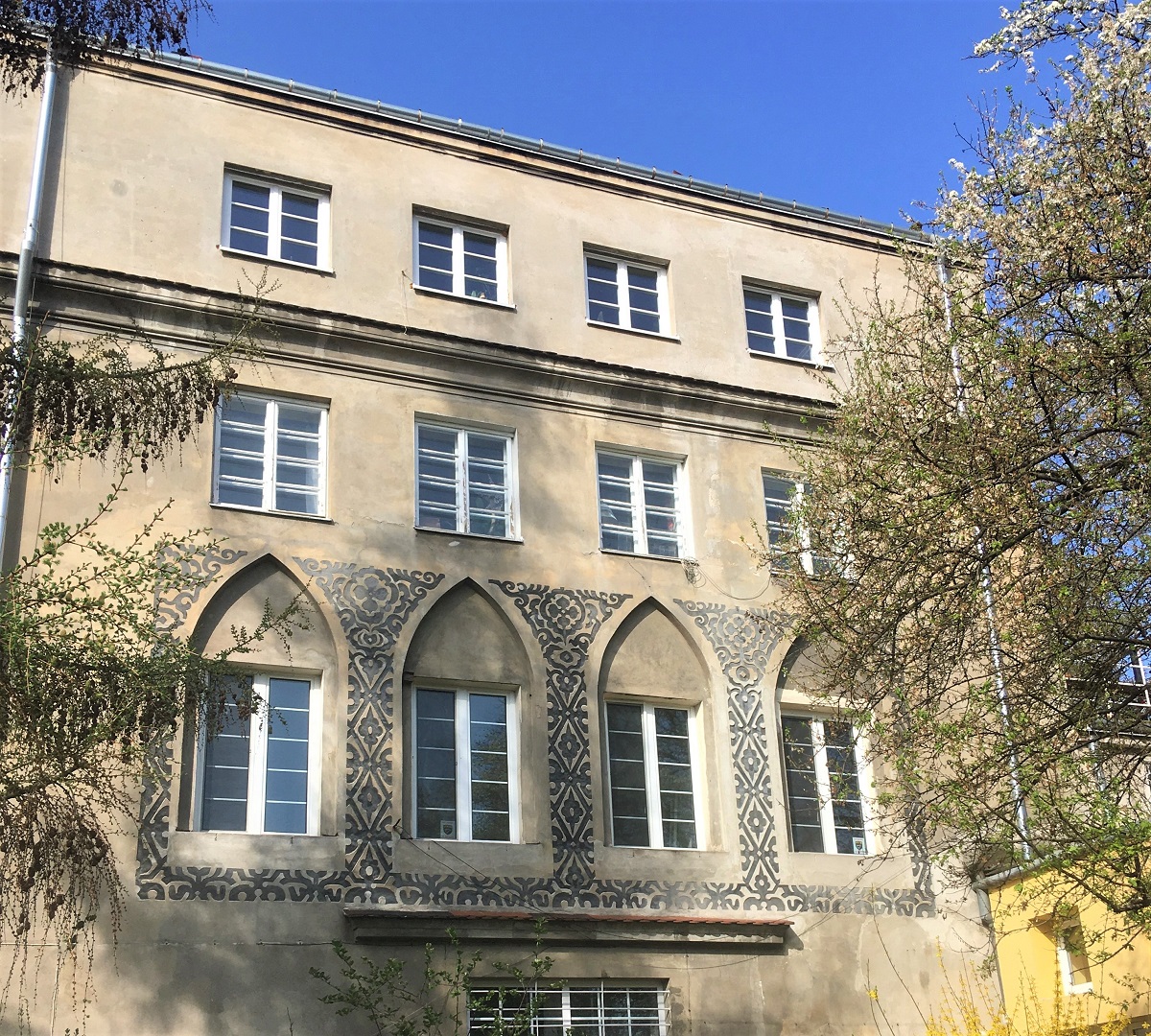The Kaminski Villa in Warsaw is part of a complex of eighteen residential buildings created for the architects and professors of the Faculty of Architecture at the Warsaw University of Technology. Work is underway to restore the historic building to its original appearance
The Professors’ Colony in Warsaw is located in the quarter of Górnośląska, J. Hoene-Wroński and Myśliwiecka streets. It was built as an example of new construction in the Second Republic of Poland. The buildings were erected around 1925 for scientists and artists; one of the first residents of the renovated villa was Zygmunt Kamiński, a graphic artist, painter and dean of the Faculty of Architecture at the Warsaw University of Technology and a professor at the Academy of Fine Arts. Zofia Trzcińska-Kamińska, a sculptor and one of the few female soldiers of the Polish Legions, also lived here
With its appearance, the Kamiński Villa refers to the so-called native architecture
At the time of the search for a national style that rejected foreign influences during the Partitions of Poland, it was very fashionable. The façade of the house is decorated with a sgraffito decoration depicting allegories of painting and sculpture by Zygmunt Kamiński. On the wall on the street side is a bas-relief with the Virgin Mary by Zofia Trzcińska-Kamińska, reports the office of the conservator of monuments
The building was damaged during World War II. However, most of the historic elements survived. Already after the end of hostilities, the building was extended to create more flats inside. To this end, the roof was added to, which was converted from a hipped roof to a gabled roof. The Kaminskis themselves took part in the work to repair the war damage. A reminder of this work is the addition of the date 1948 in the decoration field above the central window, above the former inscription 1925
The renovation work is being carried out with financial support from the municipal budget of Warsaw. Councillors awarded three grants, the first for the amount of PLN 172,000 and the second for PLN 222,000. In addition, PLN 14,000 was provided to reimburse part of the cost of the design according to which the work is being carried out
The contractor engaged a team of professional conservators and state-of-the-art technology to work on the object. It was decided to clean the dirty and damaged sgraffito decorations using a laser, which reduced the risk of accidental damage to the detached fragments
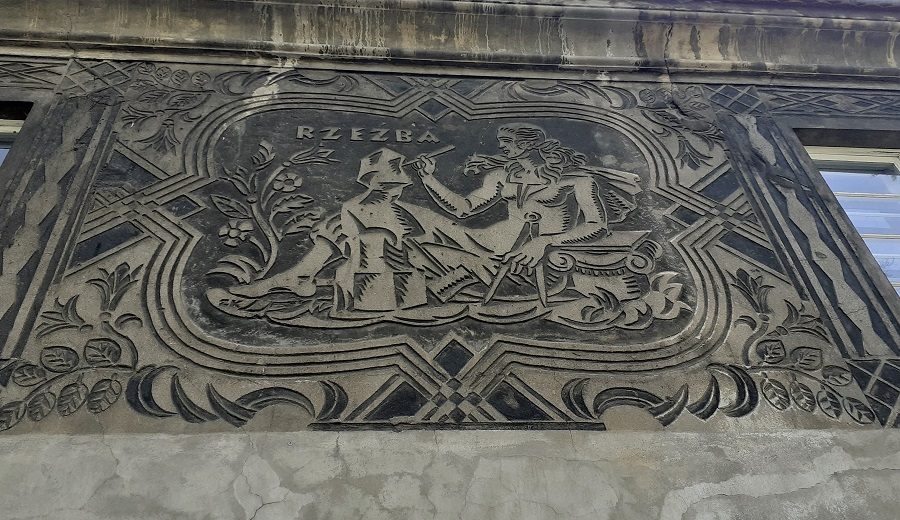
This technique had a very good effect even on heavily damaged, delaminated fragments and revealed the beautiful, deep black of the underlying layers. On this occasion, the conservators made a surprising discovery – under the black underlay, a layer of material in an intense, deep red was revealed. Presumably, it was originally planned to give the decoration this unusual colouring. However, this layer is very impermanent and easily flakes off. Perhaps this was the reason for the decision to cover it with a much more durable black plaster. In addition, after cleaning, traces of paint are visible on the decoration, which the authors of the decoration used to enhance the artistic expression of the sgraffito, the BSKZ adds
The discovery was made on the façade facing the garden. Under a thin layer of putty, the original brick-red plaster mortar was discovered – this, combined with the pointed form of the blends, gives an interesting neo-Gothic appearance. The decorations on the garden side, however, are in worse condition than those on the street side. This is because the former were attempted to be repaired by various contractors, while the latter were repaired personally by the Kaminskis
During the work, poor-quality building materials were replaced, including planks and lightweight Suprema-type chip-cement boards, which were developed in the 1930s as a cheap material for walls and insulation. The renovated roof, meanwhile, was covered with plain tiles, which hark back to the original 1940s roofing
The renovation work is expected to be completed later this year
source photo: Office of the Capital Conservator of Monuments
Read also: Warsaw | Monument | Renovation | Detail | Curiosities | whiteMAD on Instagram

